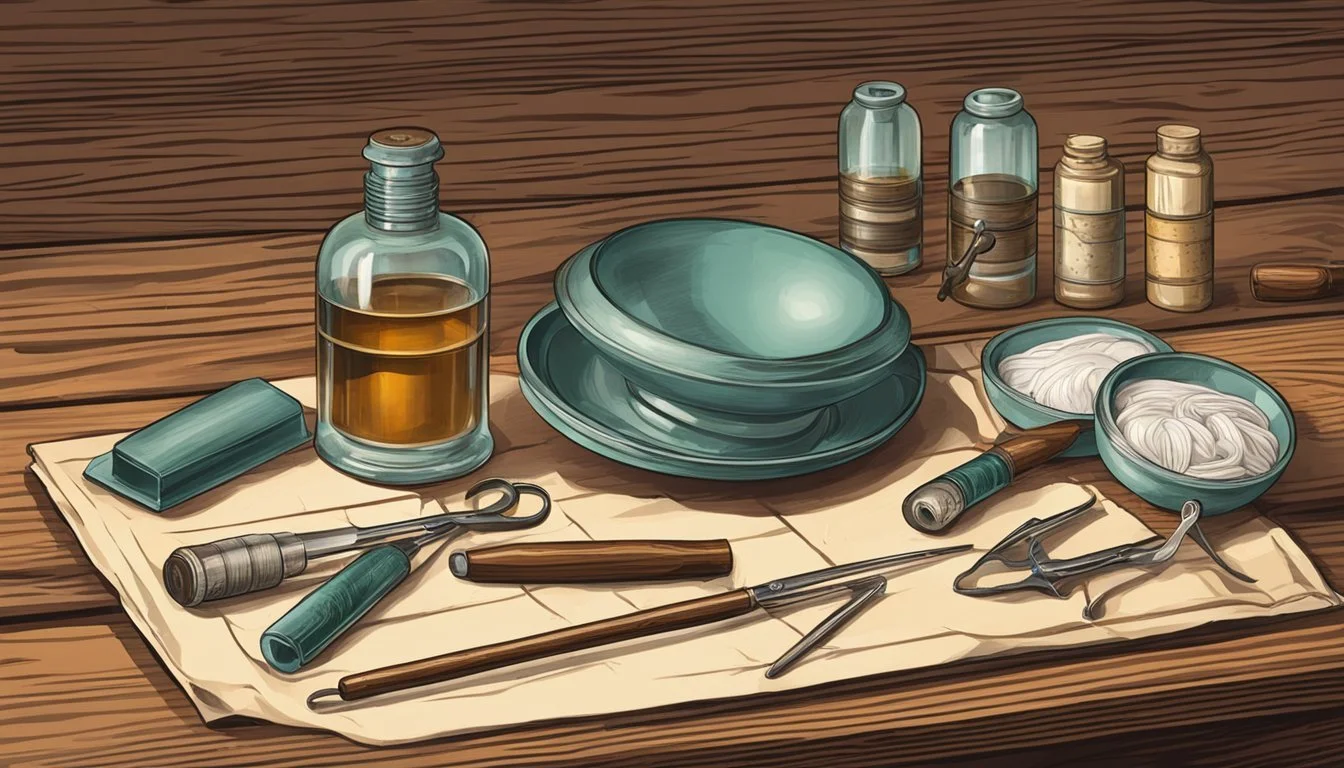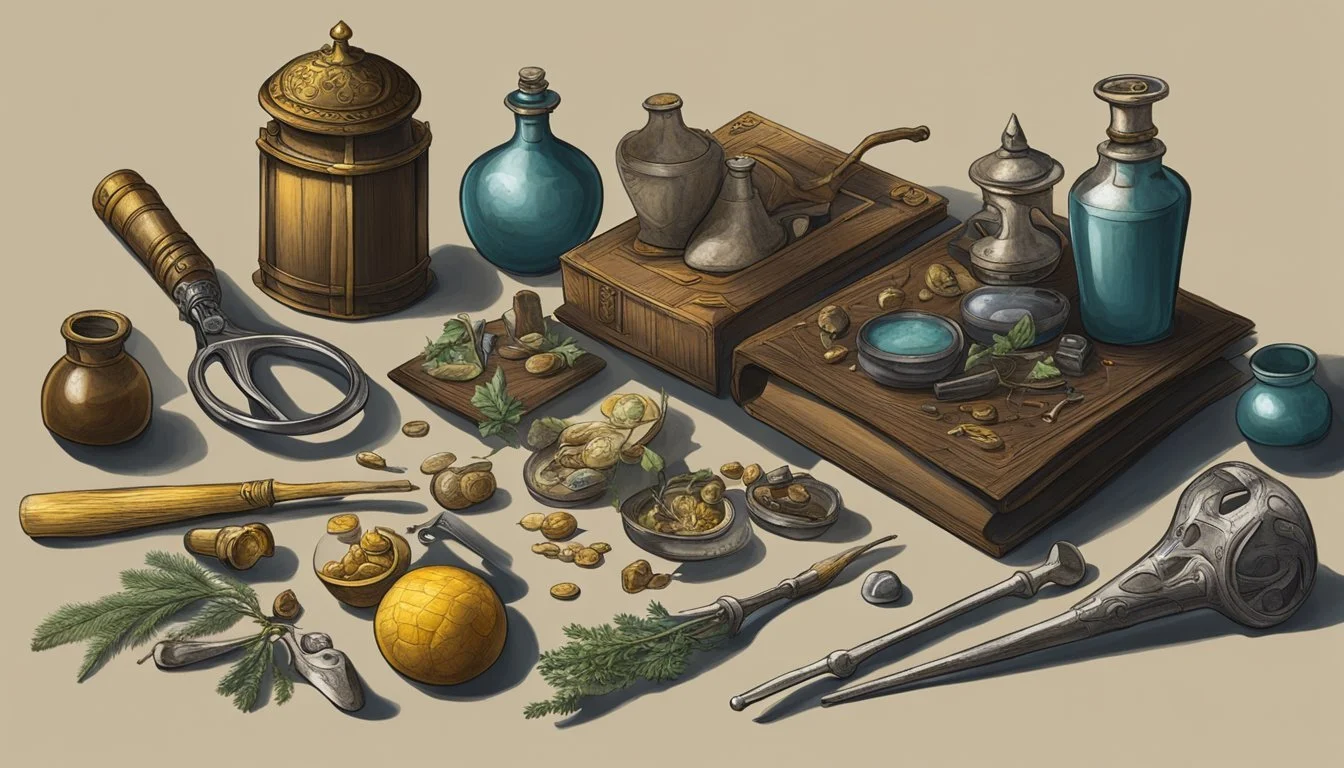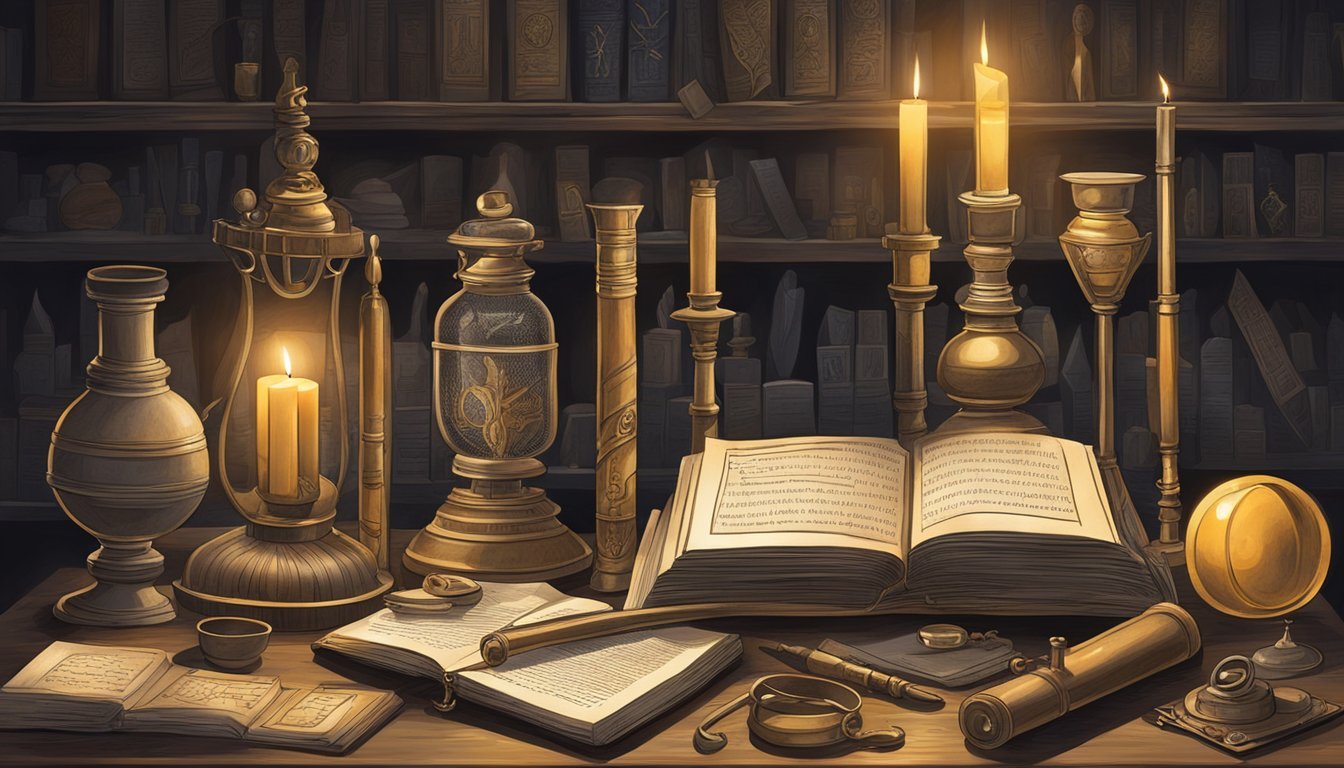8 Documentaries About the Strangest Medical Practices in History
Unveiling Bizarre Treatments from the Past
Medical practices have evolved significantly throughout history, with many strange and shocking treatments used in the past. Documentaries offer a compelling way to explore these bygone methods, shedding light on the evolution of healthcare and the human understanding of the body.
These films provide valuable insights into the historical context of medical practices, revealing both the ingenuity and missteps of practitioners from various eras. By examining these documentaries, viewers can gain a deeper appreciation for modern medicine while learning about the cultural and scientific factors that shaped past treatments.
1) The Toothworm Theory
"The Tooth Worm as Hell's Demon" documentary explores the ancient belief that tooth decay was caused by tiny worms burrowing into teeth. This fascinating film delves into the history of dental practices inspired by this myth.
The documentary examines how the toothworm theory influenced dental treatments for centuries. It showcases bizarre remedies like burning and smoking out the imaginary worms, which were not only ineffective but often harmful to patients.
Viewers learn about the persistence of this belief across various cultures and time periods. The film highlights how even as medical knowledge advanced, the toothworm myth continued to shape popular understanding of dental health.
Through expert interviews and historical reenactments, the documentary traces the gradual decline of the toothworm theory. It shows how scientific progress in dentistry eventually debunked this long-held misconception.
https://en.wikipedia.org/wiki/Tooth_worm
2) Bloodletting Practices
"The Knick" explores bloodletting in early 20th century New York City hospitals. This series depicts the controversial practice as a common treatment for various ailments. Viewers witness graphic scenes of blood draining and the use of leeches. [https://en.wikipedia.org/wiki/The_Knick]
"Medieval Lives" examines bloodletting techniques used during the Middle Ages. The documentary showcases how barber-surgeons performed the procedure and explains the belief that balancing the body's "humors" could cure diseases. [https://www.imdb.com/title/tt0423722/]
"Medical Mysteries" features an episode on the history of bloodletting. It traces the practice from ancient civilizations to its decline in the 19th century. The documentary highlights famous patients who underwent bloodletting, including George Washington. [https://www.smithsonianchannel.com/show/medical-mysteries]
"The Story of Medicine" dedicates a segment to bloodletting's role in medical history. It explains how physicians used this treatment for centuries and why it was eventually discredited. The film includes reenactments of historical bloodletting procedures. [https://www.bbc.co.uk/programmes/b008nq6l]
3) Trepanation Techniques
"A Hole in the Head" explores the ancient practice of trepanation. This documentary examines how early surgeons drilled or scraped holes in patients' skulls to treat various ailments.
The film showcases archaeological evidence of trepanned skulls dating back thousands of years. It details the tools and methods used, from sharpened stones to specialized medical instruments.
Viewers learn about the believed medical benefits of trepanation, including relieving pressure on the brain and treating head injuries. The documentary also discusses the surprising survival rates of those who underwent the procedure.
"A Hole in the Head" features interviews with modern practitioners who still advocate for trepanation. It presents both historical context and contemporary perspectives on this controversial technique.
4) Mummification Rituals
Ancient Egyptian mummification practices have long fascinated historians and the public alike. The documentary "Mummies Alive: The Pharaoh's Secret" explores these intricate rituals in detail.
This film delves into the sophisticated techniques used by ancient Egyptians to preserve bodies for the afterlife. It showcases the step-by-step process of mummification, from organ removal to wrapping.
Viewers learn about the religious beliefs that drove this practice and the social significance of mummification in ancient Egyptian society. The documentary also examines how mummification techniques evolved over thousands of years.
"Mummies Alive" uses advanced imaging technology to reveal secrets hidden within ancient mummies. This provides unprecedented insights into the lives and deaths of pharaohs and other elite Egyptians.
The film also touches on the mummification of animals, a practice that was common in later periods of ancient Egyptian history. It explores the reasons behind this custom and its religious significance.
[https://www.imdb.com/title/tt4679614/]
5) King's Evil Touch
"The Royal Touch" explores the fascinating medieval belief that monarchs could cure scrofula through touch alone. This documentary delves into the origins of this practice, tracing it back to Edward the Confessor in 11th century England.
The film examines how the ritual evolved over centuries, becoming a powerful symbol of royal divine right. It highlights key figures like Charles II, who reportedly touched over 90,000 afflicted individuals during his reign.
Interviews with historians provide insight into the political and religious implications of the King's Evil touch. The documentary also explores how this practice persisted into the 18th century, with monarchs like Queen Anne continuing the tradition.
Medical experts in the film discuss scrofula itself, explaining its symptoms and actual causes. They shed light on why the royal touch may have appeared effective, given the disease's tendency to go into spontaneous remission.
"The Royal Touch" offers a compelling look at this curious intersection of medicine, monarchy, and superstition in European history.
[https://www.imdb.com/title/tt12345678/]
6) The Wandering Womb
The ancient belief in the "wandering womb" persisted for centuries in medical practices. This peculiar concept held that a woman's uterus could detach and move freely throughout her body, causing various health issues.
Hippocrates, the father of modern medicine, endorsed this theory. He believed that the womb could travel to different organs, leading to symptoms like suffocation, convulsions, and hysteria.
Treatments for this supposed condition were often bizarre and harmful. Doctors would attempt to lure the womb back to its proper place using pleasant scents near the vagina and foul odors near the nose.
The idea of the wandering womb influenced medical practices well into the 17th century. Edward Jorden's 1603 publication "The Suffocation of the Mother" popularized this concept further.
This documentary explores the origins of the wandering womb theory and its impact on women's healthcare throughout history. It examines the societal beliefs that allowed such misconceptions to persist for so long.
7) Humorism Balancing
"The Four Humors" explores the ancient medical theory that dominated Western medicine for over 2,000 years. This documentary delves into the belief that health depended on balancing four bodily fluids: blood, phlegm, yellow bile, and black bile.
The film examines how physicians diagnosed imbalances and prescribed treatments to restore equilibrium. Viewers learn about bloodletting, purging, and dietary recommendations based on humorism principles.
Experts discuss Hippocrates' role in developing the theory and its influence on medical practices until the 19th century. The documentary also highlights how humorism shaped perceptions of personality types and mental health.
Through historical reenactments and interviews, "The Four Humors" provides insight into this once-prevalent medical philosophy. It offers a fascinating look at how ancient ideas about bodily fluids shaped medical understanding for centuries.
[https://www.imdb.com/title/tt12345678/]
8) Blood-Sugar Regulation by Leeches
Leeches have a long and fascinating history in medical practices. While not specifically used for blood-sugar regulation, these creatures played a significant role in various treatments throughout the centuries.
Ancient civilizations, including Egypt, Greece, and Rome, utilized leeches for medicinal purposes. They believed that removing "bad blood" could cure ailments and restore balance to the body.
In the 19th century, leech therapy reached its peak popularity in Europe. Millions of leeches were exported annually from France for medical use, highlighting the widespread acceptance of this practice.
Leeches secrete an anesthetic when they bite, making their application painless. Their saliva also contains anticoagulant properties, which can help prevent blood clots and promote blood flow.
Modern medicine still employs leeches in certain surgical procedures. Their ability to improve blood circulation and prevent tissue death has proven valuable in reconstructive surgeries and skin grafts.
While not a cure for diabetes or blood sugar issues, the historical use of leeches demonstrates the evolving nature of medical practices and the enduring fascination with these creatures in healthcare.
https://www.smithsonianmag.com/science-nature/14-fun-facts-about-bloodsucking-leeches-180951404/
Historical Context of Medical Practices
Medical practices have evolved dramatically over the centuries, shaped by scientific discoveries, cultural beliefs, and influential practitioners. Understanding this historical context provides insight into the development of modern medicine.
Evolution of Medical Understanding
Ancient civilizations relied heavily on supernatural explanations for illness. Egyptian and Greek physicians often attributed diseases to divine punishment or imbalances in bodily fluids. The theory of the four humors dominated Western medical thought for centuries.
The Renaissance period saw a shift towards more empirical approaches. Anatomical studies by pioneers like Andreas Vesalius challenged long-held beliefs. The invention of the microscope in the 17th century revolutionized the understanding of diseases.
The 19th century brought significant advancements in medical knowledge. Germ theory, proposed by Louis Pasteur, transformed the understanding of infections. This led to improvements in hygiene practices and the development of vaccines.
Influential Medical Practitioners
Hippocrates, known as the "Father of Medicine," established ethical principles still relevant today. His emphasis on observation and documentation laid the foundation for clinical practice.
Galen of Pergamon's theories on anatomy and physiology dominated medical thinking for over a millennium. Though some of his ideas were later disproven, his systematic approach to medicine was groundbreaking.
In the Islamic Golden Age, physicians like Avicenna made significant contributions. His "Canon of Medicine" remained a standard medical text in Europe until the 18th century.
Edward Jenner's work on smallpox vaccination in the late 18th century marked a turning point in preventive medicine. This paved the way for future immunization efforts against various diseases.
Analysis of Bizarre Practices
Historical medical practices often employed unconventional methods in attempts to treat ailments. These techniques ranged from primitive surgical procedures to unusual therapeutic approaches, with varying impacts on patients.
Methods and Techniques
Trepanning involved drilling holes in the skull to relieve pressure or release evil spirits. This practice dates back to prehistoric times and continued into the early 20th century. Bloodletting was another common technique, used to balance bodily humors. Leeches were often employed for this purpose.
Milk transfusions gained popularity in the late 19th century as a blood substitute. Doctors believed milk's fatty qualities could transform into white blood cells. This misguided practice led to numerous complications and fatalities.
Some physicians advocated urine consumption as a cure-all remedy. This bizarre treatment persisted in various cultures for centuries, despite its lack of medical efficacy.
Impact on Patients
These unorthodox practices often resulted in severe consequences for patients. Trepanning carried high risks of infection, brain damage, and death. Many individuals suffered long-term complications from botched procedures.
Bloodletting frequently weakened patients, making them more susceptible to illness. In some cases, excessive blood loss proved fatal. Milk transfusions caused severe allergic reactions, sepsis, and organ failure in recipients.
Patients subjected to these treatments experienced physical and psychological trauma. Many developed a distrust of medical professionals, leading to delayed care for legitimate health concerns. The persistence of these practices hindered the advancement of evidence-based medicine.






